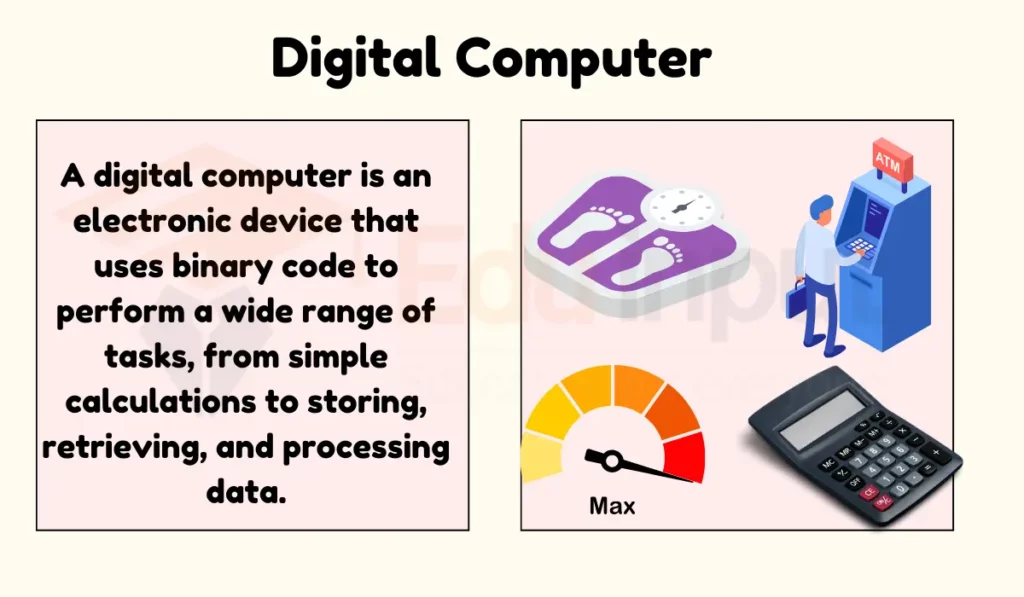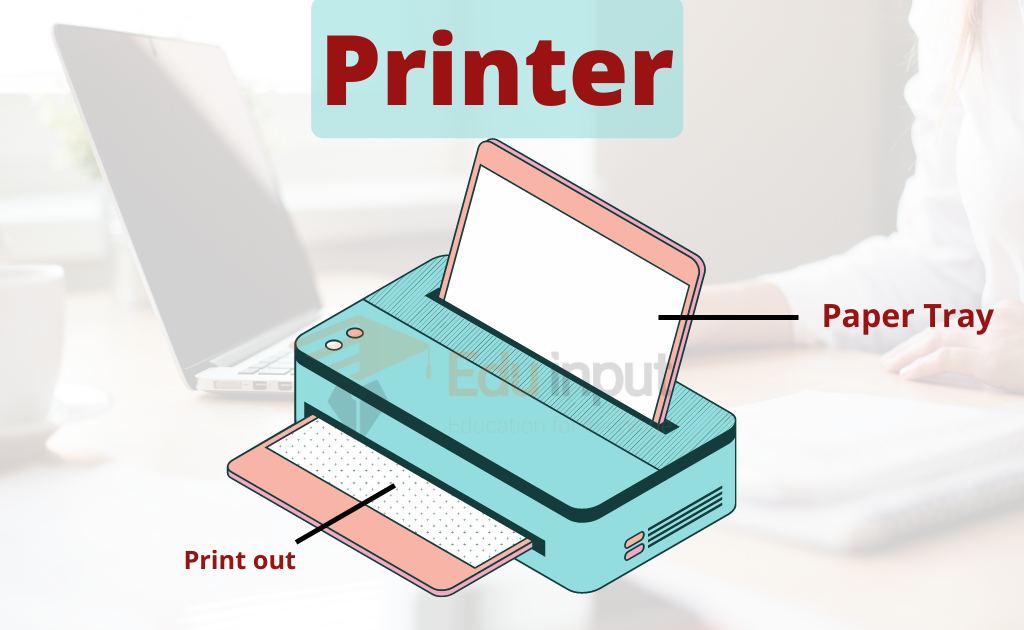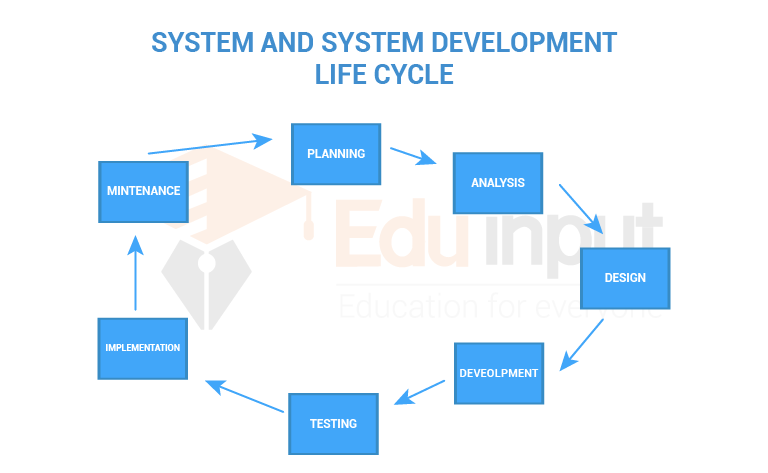Digital Computer – Types, Advantages, Disadvantages
What is a digital computer?
A digital computer is a device that uses binary code (0’s and 1’s) to perform calculations. A digital computer consists of many electronic components including transistors, resistors, capacitors, and wires. These components communicate with each other via electrical signals.

To store information, a digital computer requires a physical storage device called memory. Memory is any type of electronic device that stores data temporarily until it is retrieved.
There are two types of memory, volatile and non-volatile. Volatile memory loses its contents if power is removed, whereas non-volatile memory retains its contents even without power.
There are significant differences between analog and digital computers. They are differentiated based on their working principle. In this article, we will discuss the digital computer, which will be very helpful for you.
Working Principle of Digital Computer
A digital work on the principle of the IPO cycle:

Input
Input refers to data that enters the system. If we talk about external hardware like cameras, then input would be the image captured by the camera. If you have a microphone, then the input would be sound waves recorded by the microphone.
Output
Output refers to data that exits the system. If you take a picture, then the output would be the image displayed on the screen. If you play music, then the output would be sound waves played back by speakers.
Processing
Processing refers to the actions taken by the system to process input into output. When you use a camera to capture an image, then processing occurs when the camera turns the image into something that can be displayed on a monitor. If you record sound using a microphone, then processing occurs when you convert the sound waves into an audio file.
Types of digital computer
The digital computer has different types of supercomputers, mainframe computers, minicomputers, and microcomputers.
Supercomputers
Supercomputers are computers that have the capability of performing millions of calculations per second. These machines are used to solve complex problems that require a lot of processing power. Examples of supercomputers include Cray X-MP, IBM Blue Gene/L, and Intel’s Xeon Phi.
Mainframes
Mainframes are similar to supercomputers except they don’t perform as many calculations at once. Instead, mainframes are designed to store information and data. Common uses for mainframes include banking, finance, insurance, and healthcare.
Mini Computer
Minicomputers are also known as mid-range computers that contain one or more processors which support multiprocessing. This means that the multiple processors share the same computer memory and other required peripheral devices to perform the given task.
Micro Computers
Minicomputers are smaller versions of microcomputers and mainframes. They’re often used in businesses and schools. Examples of minicomputers include Apple Mac Pro, Dell Precision T7500, etc.
2. Calculator
A calculator is a simple device that is used to perform mathematical calculations. It can be either electronic or hardware-based, and it is capable of addition, multiplication, subtraction, or division.
3. Digital weighing machine
The digital electronic weighing scale is a helpful device for measuring an object’s mass or weight. It employs the use of a strain gauge load cell.

In contrast, analog scales use springs to show the weight of an object, while digital scales convert the force from the weight into an electric signal.
Advantages of Digital Computer
The digital computer has many benefits which are given below
- They are cheaper.
- Easy to use.
- We can easily upgrade them.
- It performs accurate results.
- This allows for the transmission of only digital information through a noise-free channel without any degradation.
- It is very flexible and compatible.
Disadvantages of Digital Computer
- They consume more power.
- Digital circuits are often fragile. If a single piece of digital data is lost or misinterpreted, it can completely change the meaning of large blocks of related data.
- Digital computers use machine language (binary code) to manipulate discrete elements of information.
Digital computers Applications
There are different applications of digital computers in our daily life.
1. Automated Teller Machine (ATM)
An automated teller machine (ATM) is an electronic banking machine that allows customers to complete basic transactions without the aid of a branch representative or teller. Most ATMs are accessible to anyone with a credit or debit card all over the world.

Related FAQs
What is meant by digital computers?
Digital computers are amazing devices that can solve problems by processing information in discrete forms.
Digital computers are versatile tools that can be used for various tasks. For example, they can be used to perform mathematical operations, store and retrieve information, or control other devices.
What are examples of digital computers?
Examples of digital computers are weighing machines, personal computers, ATMs, smartphones, etc.
What are the Main Five Characteristics of Digital Computers?
Accuracy
Automatic
Speed
Memory
Flexibility

 written by
written by 




Leave a Reply